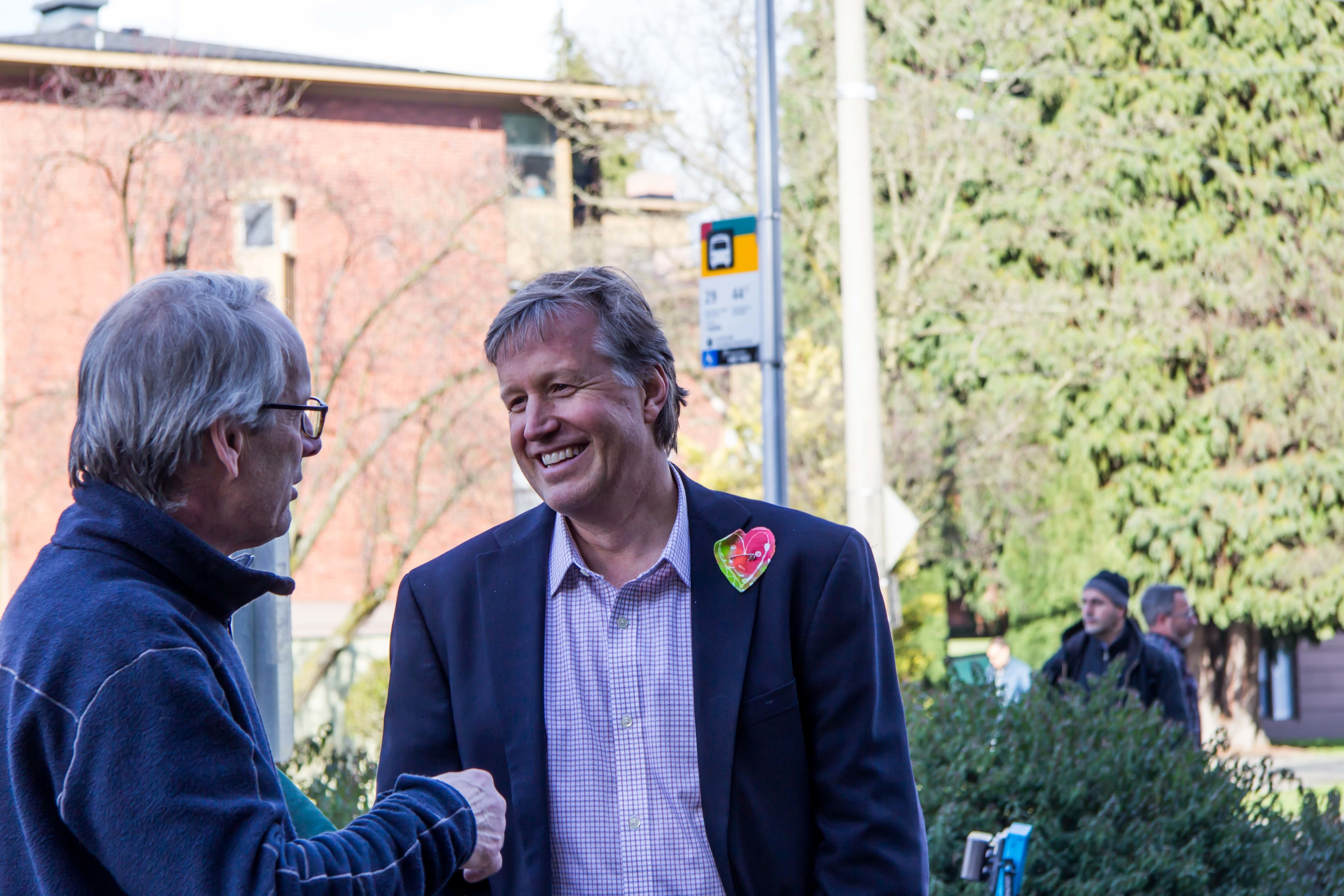Demolition Data Disputes Liberal Narrative

1. Isn’t it weird that one of the top contributors to the official No on Sound Transit 3 campaign ($1,000), Bellevue developer Kevin Wallace, is a big fan of light rail.
Wallace’s company recently spent $33 million to buy Park at Northgate, a residential complex featuring 146 two-bedroom units located right near the planned 2021 Northgate light rail station; Wallace Properties already owns a project across the street and has another 140- unit project near Northgate light rail slated to open in 2017.
Wallace recently told a local real estate site:
"Park at Northgate represents a great opportunity for us to continue our mission of providing transit-oriented, sustainable workforce housing projects in the urban centers of the Puget Sound region. We…look forward to continuing to collaborate with the city on its workforce housing and transit-oriented development goals.”
Embracing the direct benefits of light rail, Wallace added: “In addition, the proximity of the project to the transit center and its non-residential location make it a perfect site for enabling future growth that will leverage the region’s multi-billion dollar investment in light rail.”
Wallace is debating Sound Transit board member, King County Council member Claudia Balducci at the Downtown Bellevue Association this afternoon.
2. Critics of growth lament that demolitions for new construction are causing displacement. Signing off on this premise—though getting bad info (there were about 1,700 demolitions between 2013 and 2015—not 7,000 as critics contend)—the council recently passed an amendment to the mayor’s plan to build 6,000 affordable units by trading upzones for mandatory affordable housing fees. The unanimously approved amendment, sponsored by council member Lisa Herbold, would add more developer fees to offset future displacement.
But a recent invaluable data dive by the local green think tank Sightline calculated all the new construction (eight units or more) built in 2016 and found this: 19 apartment buildings adding 1,764 units demolished just 21 homes.
Sightline writer Margaret Morales, whose report comes with an illustrated breakdown identifying every new project with a before and after shot (ie, housing versus parking lots) concludes:
In other words, for every single home lost to a new apartment building in Seattle this year, some 84 new homes came onto the market for Seattle families.
So far, fully 19 new apartment projects peppered across Seattle will add nearly 1,800 much needed new homes to the Emerald City this year. And the total number of dwellings demolished to make space for them, by actual count, is just 21. Some of those dwellings were already so derelict that they were vacant, so the number of actual families displaced by new construction was fewer than 18.
Yet in the public conversation, we often hear an inflated version of the demolition side of the displacement story. It’s easy to point to the buildings that fall and the owners or tenants who leave them. Meanwhile, it’s just as easy to overlook all the people who find homes in new buildings. Still more abstract is the bidding process that cascades down the housing market, by which any new housing—even if it’s expensive—prevents the economic displacement of low-income households elsewhere. Though my own family certainly won’t be renting a brand new apartment in downtown Seattle anytime soon, perhaps the family that does will leave another, more modest, home available for us.
3. Architect David Neiman posted a (default) companion piece to the Sightline report on his own blog yesterday gaming out how much affordable housing the city is losing by not developing new units.
Specifically, Neiman, who has documented the freeze on pod apartments since city council passed strict regulations on the micro apartments in 2015, maps out how much affordable housing we’ve lost by not building pod apartments.
His conclusion: "Multiplied over ten years, this represents the loss of 8,500 units of affordable housing, a 25 percent rent hike for 13,000 people, and 3,450 units of housing production lost."
4. $15. Mandatory affordable housing. Pot. And now it looks like Seattle is leading national policy trends in yet another way.
Last year, I wrote an article about the parks department’s decision to open up city greenspaces to official pedestrian paths and recreational biking.
The New York Times reports that the federal government is now up to the same thing, and stirring up the same controversy between environmentalists and environmentalists.
From Colorado’s Front Range to the necklace of towns around Lake Tahoe — a debate is raging over what the future should look like out on the trails, and whether hiking boots and knobby tires can coexist.
A bill in Congress would open up biking in federally designated wilderness, where “mechanical transport” has been banned since President Lyndon B. Johnson signed the Wilderness Act in 1964. Conservation groups have mostly lined up in opposition to the change, fearing an erosion of land protections, and some cycling groups are opposing the bill for similar reasons. But many other riders, including Rose’s mother, Char Waller, argue that wilderness rules must adapt to a generational shift in how young people like her daughter recreate. Wild places get saved and protected, she said, only when people love them and use them.




